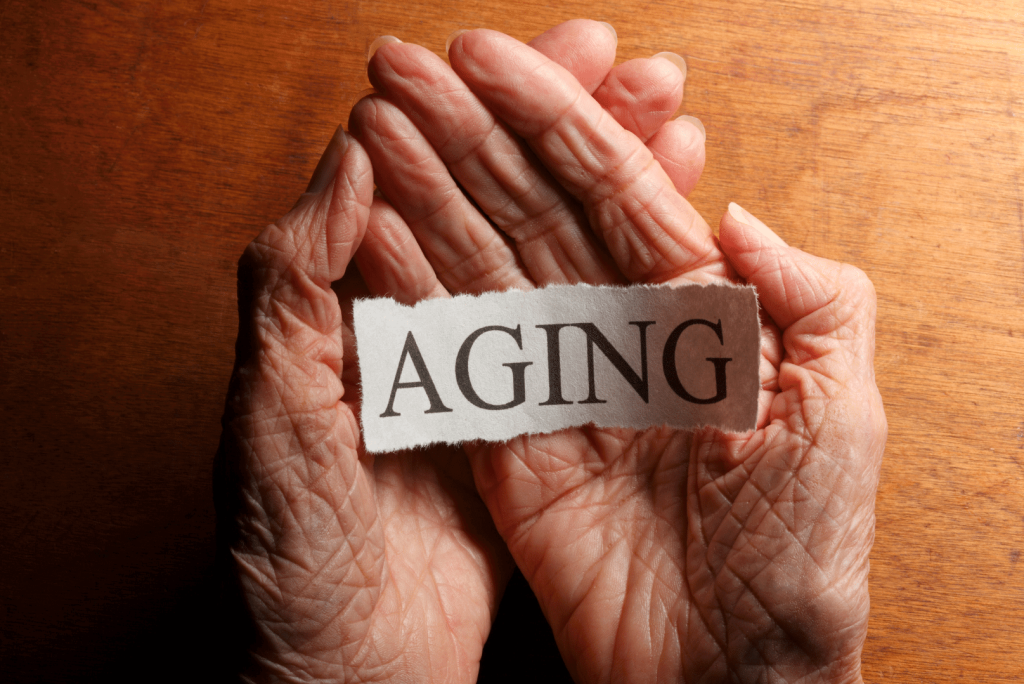
What’s the Best Anti-aging Diet and Lifestyle for Healthspan?


What’s the Best Anti-aging Diet and Lifestyle for Healthspan?
Healthspan refers to the part of your life where you’re in good health and functionality. Maximizing healthspan doesn’t just mean living longer, but rather living your best life for the longest.
In this article, Part 1, we’ll uncover clues from the longest-living and healthiest populations in the world to understand nutritional factors that contribute to their long healthspans. In the next article, Part 2, we’ll cover lifestyle factors.

Secrets behind Blue Zone Longevity
Approximately 20 to 30% of longevity is attributed to your genetic makeup. This leaves the remaining 70 to 80% in the hands of your diet and other lifestyle choices.
To unravel the secrets of longevity, researchers turn their attention to areas around the world known as Blue Zones. They include:
- Okinawa, Japan
- Sardinia, Italy
- Nicoya, Costa Rica
- Ikaria, Greece
- Loma Linda, California
- Vilcabamba, Ecuador
These places have a high number of nonagenarians and centenarians – individuals who surpass 90 and 100 years of age, respectively. Most of these individuals are very active and functional, at least well into their 80s. By examining commonalities between the Blue Zones and similar regions, researchers gain insight into what contributes to longevity.
8 Nutritional and Lifestyle Factors for Maximum Longevity and Healthspan
Actual food compositions are vastly different among the various Blue Zones. However, by understanding the following commonalities, you can gain wisdom and make informed choices that may lead you toward a longer, healthier, and more fulfilling life.
1) Mild Caloric Deficit and Fasting
Eating fewer calories while maintaining optimal nutrition may help you live longer. In Okinawa, people tend to follow what they call “hara hachi bu.” This means eating until 80% full rather than 100%. This can prevent you from consuming too many calories.
Science tells us that the Okinawans are on to something. While restricting calories can result in weight loss, what are the other benefits?
Most nonagenarians and centenarians tend to be thin and wiry to begin with, so weight loss is not top of mind for them. However, researchers believe their habit of stopping eating before they’re full partly explains their longevity. Here are the mechanistic reasons why.
Metabolic adaptation may help you live longer
Animal studies suggest that caloric restriction can extend lifespan. In humans, a mild caloric deficit, such as around 500 calories or up to 25% daily, improves many markers associated with longevity. In a study of 218 individuals, they initially lost ~10% of their body weight before their metabolism adapted to burn fewer calories throughout the day. The metabolic adaptation to burning fewer calories can stop your weight loss progress, but in the long-term, the adaptation to eating less may increase lifespan.
One widely studied theory of aging is the “rate of living theory.” According to this theory, larger species with high energy expenditure tend to have shorter lifespans because their higher mass contributes to a greater energy cost for maintaining life. Therefore, if your energy expenditure is lower, your available energy can last longer and extend your lifespan.

Reduced oxidative stress
High oxidative stress, or reduced ability to neutralize it, is a hallmark of aging.
Lower energy expenditure, along with fasting and caloric restriction, is also associated with a reduction in oxidative stress. Oxidative stress occurs when there are too many reactive oxygen species (ROS) molecules in your cells. Excessive oxidative stress can lead to systemic oxidative stress and damage proteins, lipids, and DNA, accelerating the aging process.
Longevity pathway activation
Restricting calories activates four longevity pathways. A review explored these pathways and how they affect longevity. They are:
mTOR (mammalian target of rapamycin)
mTOR is a cellular signaling pathway that governs cell growth, proliferation, and survival. Excessive mTOR activity may lead to various age-related diseases and conditions.
Sirtuins
Sirtuins, also known as silent information regulators, impact various cellular pathways responsible for:
- Gene expression regulation
- Metabolism
- DNA repair
- Apoptosis (cell death)
AMPK (Adenosine monophosphate-activated protein kinase)
The AMPK pathway regulates energy utilization and transformation within the human body. When you’re young, high levels of AMPK safeguard against chronic conditions like diabetes and obesity. However, AMPK levels may decline as you age, making it easier to gain weight as you get older.
NF-kb (nuclear factor-kappa B)
NF-kb acts as a mediator in the body’s immune response, and inflammatory stress activates it. Aging increases overall background inflammation, which in turn contributes to age-related conditions. By reducing stress and inflammation and inhibiting the NF-kB pathway, caloric restriction and fasting can slow down and postpone the onset of age-related conditions.
Researchers determined that beyond the individual role of each pathway, they all support the critical anti-aging function of autophagy. A decline in autophagy – the cleaning up of old cellular components – which happens naturally as you age, may also be why inflammation and disease increase with age.
Caloric restriction, however, can help modulate these longevity pathways and support autophagic activity, thereby helping decrease inflammation and disease risk. All of these reduce the risk of diseases associated with aging (or overconsumption), including:
- Obesity
- Cardiovascular diseases
- Insulin resistance, metabolic syndrome, and diabetes
- High cholesterol and blood pressure
- Depression
- Age-related cognitive decline and dementia
Fasting is also common in the Blue Zones. For example, people living in Ikaria, Greece, fast for about 150 days a year as Greek Orthodox Christians. Fasting can result in health benefits very similar to eating a caloric deficit.
A systematic review focused on the health benefits of religious fasting included a highlight on Greek Orthodox Christians. They tend to experience the following health benefits:
- Decreased cholesterol
- Weight loss
- Reduced BMI
- Decreased fasting glucose levels
- Increased cognitive function
- Improved emotional well-being
Religious or spiritual fasting isn’t the only way to gain these health benefits. Many people incorporate intermittent fasting into their daily routine for health reasons, and you can learn more about this in our article Health Benefits of Intermittent Fasting.
2) Home Cooking

In America, the love for dining out runs deep, with many people indulging in commercially prepared food an average of five times a week. The convenience of meal delivery and the fast-paced lifestyle hint at the possibility of even higher numbers in the future. This is in stark contrast to those living in the Blue Zones.
In the Blue Zones, centenarians have mastered the art of eating primarily at home. They reserve dining out for truly exceptional moments, such as joyous celebrations.
If you are striving for longevity, cook at home. Cooking at home allows you to take charge of the ingredients you use and offers an opportunity for physical activity and engagement.
A ten-year study of 1,888 adults over age 65 explored the relationship between cooking behavior and survival. Adults that cooked more frequently had a lower mortality rate than those who did not.
However, researchers speculate that the act of cooking might not be the sole factor contributing to their higher survival rates. Instead, it is likely the other health-conscious behaviors that accompany home cooking.
The other health behaviors that may support these results include:
- Those that cook at home more frequently tend to make better food choices and have a more diverse diet.
- Frequent shopping increases social interaction. The benefits of shopping are even more significant in men than women. Men’s mortality risk decreases by 27% compared to those who shop infrequently, while women’s mortality risk decreases by 23%.
- Cooking at home gives a greater sense of control and autonomy, and is a determinant of disease by the World Health Organization (WHO).
If you’re under the age of 65, make the change now. A study including 11,369 adults ages 29-64 explored the health benefits of eating home-cooked meals more frequently. Compared to three times a week, those who ate a home-cooked meal five times a week:
- Consumed 60 grams more fruit and almost 100 grams more vegetables
- Were 28% less likely to have an overweight BMI
- Were 24% less likely to have excess body fat
To get started with eating more home-cooked meals, try implementing these steps:
- Make a meal plan for the week and buy all the supplies beforehand.
- Cook in bulk. This will allow you to have pre-cooked meals ready to heat and remove the stress of making a new meal every night.
- Eat together. Take advantage of the social benefits of eating with friends and loved ones and plan to eat together every evening or as often as possible.
3) Nutrient Density
Inhabitants of Blue Zones and similar regions prioritize nutrient density by predominantly consuming freshly-harvested produce, often grown in their gardens. Some communities, like the Okinawans, embrace a holistic approach by including whole animals in their diets. They appreciate every part, including organs and fattier cuts of meat.
This emphasis on nutrient-dense foods underscores the importance of a nourishing diet in promoting longevity and overall well-being. Recall that when eating at a caloric deficit, those calories must be nutrient-dense to receive the most significant health benefit.
A Swedish study of almost 100,000 adults examined the effects of diet nutrient density and mortality risk. Both men and women with a lower nutrient-dense diet had a higher mortality risk. The benefits were even more pronounced for women, with an increased mortality risk of around 50%, while men’s increased risk was about 10%.
When you choose locally-produced foods or, even better, foods from your garden, you instantly increase the nutrient density of your diet. Foods lose a lot of their nutrients on the way from the farm to the grocery store and even more while sitting on the shelf due to cellular respiration and oxidation.
A comparative study explored vitamin retention in fruits and vegetables. Researchers focused on water-soluble vitamins C and riboflavin and fat-soluble vitamins vitamin E and beta carotene. Vitamin C was the quickest to degrade after harvest, with riboflavin close behind.
The researchers also examined how the nutrient content changed over time in refrigerated and frozen storage. Overall, freezing fruits and vegetables preserved nutrients better than refrigeration, except for beta-carotene, which drastically degraded when frozen.
Mass-produced food, which is the majority of what’s available in grocery stores, also tends to have lower nutrient density than those grown as smaller crops. A literature review exploring fruit and nutrient composition discovered declines of 5%-40% or more in vitamins and minerals of fruits and vegetables in the past 50 to 70 years.
Researchers explained some of this decline due to increased crop yields. When breeders prioritize high yield in fruits and vegetable crops, they may inadvertently overlook the potential impact on essential nutrients and numerous beneficial phytochemicals. So, the increase in output doesn’t necessarily guarantee a proportional increase in the abundance of these vital elements.
When it comes to choosing meat, organ meats are the most nutrient-dense option available. A study exploring organ meats as a solution to food insecurity examined their nutrient content. Researchers found organ meats to contain:
- High levels of vitamin E and B vitamins
- Essential amino acids carnosine, anserine, carnitine, taurine, and creatine
- Antioxidants glutathione and coenzyme Q10 (CoQ10)
- A good omega-6 vs. omega-3 fatty acid ratio that promotes a healthy inflammatory response
- Higher amounts of protein than muscle meat
- Bioactive peptides that support intestinal and immune health
When it comes to maximizing the nutrient density of your food, sourcing it from your garden or a local farmer’s market is optimal. If possible, choose heirloom breeds that are more flavorful and perhaps more colorful over commercial breeds. The freshness and proximity of these options ensure that you’re getting the most nutrient-rich foods available. However, when these options are not readily accessible, frozen fruits or vegetables are the next best alternative.
4) Various Prebiotics to Feed a Diverse Gut Flora

Aging affects both our bodies and gut microbiomes, and the interactions between them can influence the aging process as a whole. Your gut health significantly impacts your immune system, and its dysregulation may lead to chronic inflammation.
As you age, your immune system weakens, which can result in a low-level state of systemic inflammation and increases the risk of chronic diseases and disabilities like:
- Heart disease
- Cognitive decline
- Metabolic disorders
- Frailty
A literature review focused on the gut microbiota characteristics of the oldest living people on Earth. They found that the oldest-old had a greater variety of microorganisms. Compared to younger-old adults, the oldest-old adults also had unique activity such as increased short-chain fatty acids (SCFA) production and pathways related to:
- Central metabolism
- Cellular respiration
- Vitamin synthesis
Researchers believe a rich and diverse gut microbiota may indicate a flexible microbial ecosystem that can adapt to changes and disturbances like illness or medication. This microbial diversity could serve as a marker of longevity.
A recent study examined the makeup of the microbiome of centenarians. Compared to other older adults, centenarians show youth-like gut features such as:
- An overrepresentation of Bacteroides, especially beneficial ones
- A more balanced distribution of species
- Decreased amount of potentially harmful bacteria.
Where they live may be part of what supports their microbiota diversity. All of the Blue Zones are more remote areas away from urban living. A study examined the gut microbiota of those living in Kyoto, Japan – a large city of over one million people – to those living in an outside rural town (Kyotango) in Japan.
In contrast to the previous study, this study found that those living outside the city had more Firmicutes and fewer Bacteroides than those in Kyoto. However, they also found that the types of Firmicutes found in Kyotango produce butyrate, a kind of short-chain fatty acid that has beneficial effects on immune function and reduces inflammation.
So how does this gut diversity happen? We know that centenarian diets in the Blue Zones contain a wide variety of fermented and high-prebiotic foods. High-fiber foods are rich in prebiotics which serve as food for the good bacteria in your gut.
Your own enzymes cannot digest fiber. Instead, it reaches your colon, becomes a nourishing source for good bacteria, and promotes their growth and multiplication.
A meta-analysis of 16 studies confirmed that diets rich in fiber have the potential to alter the gut microbiota. The studies consistently showed that fiber increases the presence of beneficial bacteria.
Blue Zone octogenarians also tend to have diets filled with fermented foods like miso, fish, and yogurt. These foods are not only delicious but can also add healthy bacteria to your diet.
A recent study examined the impact of a diet rich in fermented foods. The researchers divided eighteen participants into two groups: one followed a diet abundant in fermented foods, while the other followed a fiber-rich diet.
The fermented food group consumed various dairy products, vegetables, and non-alcoholic beverages. After 17 weeks, participants who followed the fermented food-rich diet had a greater diversity of gut microbiota than those who followed the high-fiber diet.
While studies are yet to take place with humans, animal studies show another way fermented foods may benefit you. They believe that fermented foods may:
- Help balance your gut microbiota
- Activate autophagy due to bioactive compounds
- Alleviate inflammation
In addition to the advantages for the gut, fermented foods offer another significant benefit. They are rich in spermidine, a natural polyamine. Spermidine can induce autophagy, a process that promotes longevity, as we have previously discussed.
Help keep your gut young by eating a high-fiber diet. Some great foods to start with include:
- Nuts
- Whole grains
- Fruits
- Vegetables
- Beans
If you already eat fermented foods, keep it up. If not, start slowly with foods and drinks like:
- Yogurt
- Sauerkraut
- Kefir
- Kimchi
- Kombucha
- Tempeh
Now that you’ve learned about nutritional factors that are secrets to longevity, keep in mind that food isn’t 100% of health. In the next article, Part 2, we’ll cover lifestyle factors that keep these Blue Zones so long-living.
References
- Passarino G, De Rango F, Montesanto A. Human longevity: Genetics or Lifestyle? It takes two to tango. Immun Ageing. 2016;13(1):12. doi:10.1186/s12979-016-0066-z
- Flynn AN, Hall KD, Courville AB, Rogers PJ, Brunstrom JM. Time to revisit the passive overconsumption hypothesis? Humans show sensitivity to calories in energy-rich meals. Am J Clin Nutr. 2022;116(2):581-588. doi:10.1093/ajcn/nqac112
- Kebbe M, Sparks JR, Flanagan EW, Redman LM. Beyond weight loss: current perspectives on the impact of calorie restriction on healthspan and lifespan. Expert Rev Endocrinol Metab. 2021;16(3):95-108. doi:10.1080/17446651.2021.1922077
- Bareja A, Lee DE, White JP. Maximizing longevity and healthspan: Multiple approaches all converging on autophagy. Front Cell Dev Biol. 2019;7:183. doi:10.3389/fcell.2019.00183
- Trabelsi K, Ammar A, Boujelbane MA, et al. Religious fasting and its impacts on individual, public, and planetary health: Fasting as a “religious health asset” for a healthier, more equitable, and sustainable society. Front Nutr. 2022;9:1036496. doi:10.3389/fnut.2022.1036496
- Saksena MJ, Okrent AM, Anekwe TD, et al. America’s Eating Habits: Food Away From Home.; 2018. Accessed May 26, 2023. https://www.ers.usda.gov/webdocs/publications/90228/eib-196.pdf
- Chen RCY, Lee MS, Chang YH, Wahlqvist ML. Cooking frequency may enhance survival in Taiwanese elderly. Public Health Nutr. 2012;15(7):1142-1149. doi:10.1017/S136898001200136X
- Chang YH, Chen RCY, Wahlqvist ML, Lee MS. Frequent shopping by men and women increases survival in the older Taiwanese population. J Epidemiol Community Health. 2012;66(7):e20. doi:10.1136/jech.2010.126698
- Mills S, Brown H, Wrieden W, White M, Adams J. Frequency of eating home cooked meals and potential benefits for diet and health: cross-sectional analysis of a population-based cohort study. Int J Behav Nutr Phys Act. 2017;14(1). doi:10.1186/s12966-017-0567-y
- Strid A, Johansson I, Bianchi M, et al. Diets benefiting health and climate relate to longevity in northern Sweden. Am J Clin Nutr. 2021;114(2):515-529. doi:10.1093/ajcn/nqab073
- Bouzari A, Holstege D, Barrett DM. Vitamin retention in eight fruits and vegetables: a comparison of refrigerated and frozen storage. J Agric Food Chem. 2015;63(3):957-962. doi:10.1021/jf5058793
- Davis DR. Declining fruit and vegetable nutrient composition: What is the evidence? HortScience. 2009;44(1):15-19. doi:10.21273/hortsci.44.1.15
- Fayemi PO, Muchenje V, Yetim H, Ahhmed A. Targeting the pains of food insecurity and malnutrition among internally displaced persons with nutrient synergy and analgesics in organ meat. Food Res Int. 2018;104:48-58. doi:10.1016/j.foodres.2016.11.038
- Badal VD, Vaccariello ED, Murray ER, et al. The gut microbiome, aging, and longevity: A systematic review. Nutrients. 2020;12(12):3759. doi:10.3390/nu12123759
- Pang S, Chen X, Lu Z, et al. Longevity of centenarians is reflected by the gut microbiome with youth-associated signatures. Nat Aging. 2023;3(4):436-449. doi:10.1038/s43587-023-00389-y
- Naito Y, Takagi T, Inoue R, et al. Gut microbiota differences in elderly subjects between rural city Kyotango and urban city Kyoto: an age-gender-matched study. J Clin Biochem Nutr. 2019;65(2):125-131. doi:10.3164/jcbn.19-26
- Rackerby B, Kim HJ, Dallas DC, Park SH. Understanding the effects of dietary components on the gut microbiome and human health. Food Sci Biotechnol. 2020;29(11):1463-1474. doi:10.1007/s10068-020-00811-w
- Myhrstad MCW, Tunsjø H, Charnock C, Telle-Hansen VH. Dietary fiber, gut Microbiota, and metabolic regulation-current status in human randomized trials. Nutrients. 2020;12(3):859. doi:10.3390/nu12030859
- Wastyk HC, Fragiadakis GK, Perelman D, et al. Gut-microbiota-targeted diets modulate human immune status. Cell. 2021;184(16):4137-4153.e14. doi:10.1016/j.cell.2021.06.019
- Kocot AM, Wróblewska B. Fermented products and bioactive food compounds as a tool to activate autophagy and promote the maintenance of the intestinal barrier function. Trends Food Sci Technol. 2021;118:905-919. doi:10.1016/j.tifs.2021.11.014
- Ghosh I, Sankhe R, Mudgal J, Arora D, Nampoothiri M. Spermidine, an autophagy inducer, as a therapeutic strategy in neurological disorders. Neuropeptides. 2020;83(102083):102083. doi:10.1016/j.npep.2020.102083






